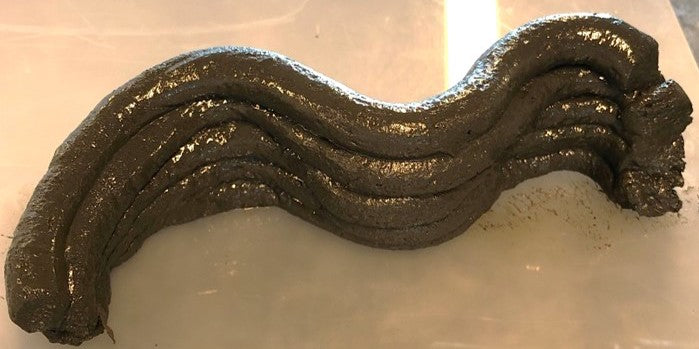
Waste to Paste: Wee Wee Makes The Best Lunar Concrete.
Share
TLDR;
- The European Space Agency discovers ingredient in our urine (urea) makes efficient moondust concrete.
- If feasible, it could leapfrog our timeline in building a gateway to Mars and beyond.
People often wonder if the moon landing was taking the p*ss.
With NASA spinning the wheels on Project Artemis (it's mission to create a lunar base that will serve as a gateway to the galaxy) we can definitely say future landings will.
The lagging need for cheap, available supplies to build on the moon is an ever-present hurdle, with continual launches of equipment and resources are a heavily taxing logistical migraine.
For example, moving 0.45 kilos into space (let alone the moon) costs around $15,300. That's a lot of quiche when you think of payloads in the tonnes of tonnes.

If we want to live on the Moon and send astronauts even further, we need something for them to live in that's sturdy, permanent, and readily available.
It needs to withstand extreme lunar temperatures ranging from 120 degrees celsius to -130 at night, minimum. Add to that mass amounts of radiation from the sun as the moon lacks an atmosphere to filter the suns harmful rays.
Oh, and last but not least, the moon still gets showered with the same meteorites that turned its mantle into dust. So the structures must be resistant enough for collisions with small-sized objects.
But...
What if we could build with what's already available on the moon?
"Uhhhhh, what's available on a barren wasteland like the Moon?" we hear you say.
For starters, the obvious is moondust, or lunar soil, or "regolith".

Our moon's mantle is a combo of "space salt" and oxygen called silicate.
After a couple of billion years of meteorite impacts, the moon's silicate mantle was hammered into fine dust, creating moondust.
Researchers have tried for years to create a lasting, malleable concrete from synthetic regolith, only to find it cracked, dry and in serious need of water.
Water ain't readily available on the moon, just FYI.
While ice is, you need to be on the extreme polar caps of the moon before you need to extract and transport it to the more livable parts of the moon.
That's a big no.
So, what is readily available?
Astronaut urine.
And a unique, abundant substance within it called urea.
Urea is the major non-toxic compound in our wee that's made from our liver breaking down amino acids and ammonia.
Hence why our tinkles have that ammonia smell.
Our kidneys move urea and water from our blood to our urine where it is expelled.
To build the concrete bonding agent, scientists from the Polytechnic University of Cartagena in Spain used a particular type of 3D printer to squeeze out the combination of willy tears and regolith.
The end product is a sight to behold.

The mixture of regolith and urea makes for a brown, pasty tube that can be used to build a" log cabin" on the moon.
It also fixes the issue of having to remove urine waste from astronauts, making a two-birds, one-stone scenario.
The levels of plasticity and durability make the material the perfect for building as it can be manipulated to almost any shape needed, becoming firm when set.

Like this moondust-tinkle-log-dome Abraham Lincoln would be proud of, for example...
Its worth noting scientists didn't jump straight from moon ice to squeezing the lemon.
Two other plasticising agents were used, with the results seriously lacking when extreme, moon-like temperatures were applied.
When Naphthalene (found in coal tar or crude oil to make plastic) and Carboxylate (salty acid mixture similar to regolith) mixtures were applied the lunar concrete was far too dry and cracked when researchers added weight.

As you can see, the urea mixture held firm yet maintained malleability.
In fact, the "wee-crete" got progressively stronger in terms of compression strength as moon temperatures were applied.
This is a big win as urea is present wherever astronauts are, while the moon ain't running low on dust any time soon.
The final hurdle in using whizz to build on the moon is a simple and efficient extraction process.
Astronauts can't sit around in the vacuum of space drinking water and peeing while waiting for the urea extraction device to do its thing.
It must be fast and provide a strong urea yield so construction can begin immediately and at an accelerated rate.
Researchers have begun hypothesising how extraction can take place, with an argument being made that pure urine without urea extracted could be used.
The actual water in the concoction could be used to add to the plasticity of the material, although setting time could become more of an issue.
PS: There's still an entire tank of peepee up there from the Apollo astronauts. We have a head start!
Thanks for reading and enjoying ARSE.
If you've read this far, probe a little deeper and support Aussie space here.
#Space_Aus




